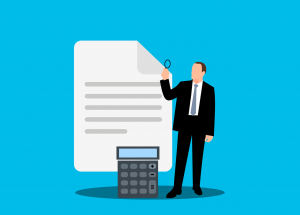Disclosure: Privacy Australia is community-supported. We may earn a commission when you buy a VPN through one of our links. Learn more.
How is Crypto Taxed in Australia?

Cryptocurrency is popular for many reasons, but one of the most overlooked reasons is how it provides a haven from many countries’ tax systems.
This might not be the case forever, but for now crypto is such an unprecedented method of collecting value that most countries lack rules for how to tax it.
But what about Australia? Ours is a country that is known for the responsiveness and expansiveness of our government. So, how do we deal with crypto?
The answer is that the Australian government has rules, but they are surprisingly loose.
Table of Contents:
- Is Crypto Taxed in Australia
- Explaining Tax Brackets
- Explaining Capital Gains in Australia
- Calculating Capital Gains in the Long Run
- Crypto Long Term Tax Discount
Is Crypto Taxed in Australia? 🇦🇺️
The short answer to this question is no, cryptocurrency itself is not taxed. The long answer is a little more complex though, as while crypto itself is not taxed, your capital gains from cryptocurrency are taxed.
“Capital gains” refers to the profit you make when you sell your crypto. It is calculated at the end of every year. The tax is progressive, which means that the more you earn the more tax you pay.
This is because Australia implements a system known as “tax brackets” for personal income. You do not have to pay taxes on the first $18,200 you make, which is known as the “tax-free threshold” but the rest of the money you make will be taxed. Let’s go into detail about how this works, including looking into the size and taxes of each tax bracket.
Explaining Tax Brackets
The $0 to $18,200 range is Australia’s lowest tax bracket. Tax brackets are easily the thing people get confused about most frequently when it comes to personal finance. But think of it like this: No matter how much money you make in a year from different income sources, the first $18,200 will be untaxed. No matter what.
Every dollar you make after $18,200 up until $45,000 will be taxed at 19% (falling to 16% on July 1, 2024). That means that $0.19 will be taken out of every $1 you make in that range. You will see some tax guides refer to this range as the “nil plus nineteen” range, which sounds like total gibberish. The reason becomes clear with the next bracket.
That is because the next bracket is the $45,001 to $120,000 range. If you make more than $45,000, then you have to pay a flat $5,092 tax, and then 32.5% tax on all the money you make after $45,000. As of July 1, 2024, the tax bracket changes to $45,001 to $135,000, with a 30% tax rate.
All of this means that if you make less than $18,200 from all income sources, then you pay no taxes at all on your crypto earnings. If you earn $50,000 a year from your job, for example, then you’re already above the tax-free threshold and therefore you’ll pay tax on your crypto earnings.
The Lingo of Tax Brackets
The reason the $18,200 to $45,000 tax range is called the “nil plus nineteen” range is that there is no flat tax for that bracket as there is for the $45,001 to $120,000 range. The $45,001 to $120,000 range is called the “five thousand plus thirty-two” range because of the flat $5,000 tax on it.
This is why tax write-offs are so important: Many people make more than $45,000, but not so much more than they can comfortably afford that $5,092 tax.
Above these are two more tax brackets. The first is $120,001 to $180,000, which is taxed at 37%. And the last is above $180,001, which is taxed at 45%. Taxes do not go higher than that, whether you make $181,000 or $11,000,000.
As of July 1, 2024, the first one changes to $135,001 to $180,000, but all the other details remain the same.
Explaining Capital Gains in Australia 💰️

I mentioned that the money you make off of your crypto is called “capital gains”, and that the tax on that money is called a “capital gains tax”. But the exact definition of your capital gains is more complicated than you might expect. This is because it is not the flat amount of money you make.
Imagine for a moment that you have $100,000 lying around. You spend every cent of it on Bitcoin. Then, when Bitcoin increases in value, you sell it. For simplicity, we will imagine that each Bitcoin cost you $20,000, and Bitcoin went up $5,000 in value to $25,000 per Bitcoin after you bought it.
That is five Bitcoin tokens earning you $5,000 each, for a total of $25,000 in profit. But when you sell your Bitcoin and transfer your money from your account, you have $125,000 coming into your account. This makes sense; that was your initial investment. You made a profit on top of that. But how is it taxed?
Some people worry that they will be taxed as if they made $125,000 even though they only made $25,000. Do not worry, the tax system is more intelligent than that. Your capital gains will be calculated to be only the money you made after all of your transactions settle, not the amount wired to you.
Calculating Capital Gains in the Long Run 🔢️
But let’s take this one step further. So, you spent $100,000 and got $125,000 back for a profit of $25,000. You pay nothing on the first $18,200 of that $25,000, and then pay 19% on the last $6,800 (assuming you don’t have any other income pushing you into a higher tax bracket).
Or you would, except that the only reason you have $100,000 and not $1,000,000 is because you lost $900,000 salvaging your widget making business throughout the year. So really, you did not profit anything out of the year. In fact, you lost $875,000.
This is why it is so important to remember that capital gains are calculated at the end of the year. The profits you make from your cryptocurrency holdings are only one variable in the equation.
What Else is Considered in Capital Gains?
One of the things that are easiest to overlook when it comes to making money off of crypto is the fees. Spending $100,000 to make $125,000 is a fantasy in a number of ways, and one of those ways is that a trading platform would never let you get away with it without charging you at least a small commission.
This commission cuts into your profits, meaning that it subtracts from your bottom line. A 1% commission on $25,000 in profits cuts into your end profit, although it’s probably not enough to bring you down to a lower tax bracket.
How Does Income Play into This?
Remember, taxes on these crypto payouts are considered alongside every other revenue stream you receive, regardless of the source – perhaps from your employer or perhaps from other investments. You also need to take into consideration your tax deductions (expenses you can claim on your tax) when determining your actual “taxable income”.
This is why people have accountants, after all: Factoring in expenses means keeping every business-related receipt to prove how much you paid in order to earn that income.
That is a lot to keep track of, and it is usually worth the effort to pay someone to manage it for you.
What is NOT Calculated in Capital Gains?
Income is considered as a revenue source. If you own a business, however, the money made for that business is considered the property of that business, not your personal property. That means it is taxed separately, and the money you spend on that business out of your own pocket is considered a personal loss even if it translates to revenue on behalf of that business. That is why money laundering is a crime.
Luxury expenses are also not considered as expenses. If you make millions of dollars from Bitcoin and then use that money to buy a yacht, then you still have to pay capital gains tax on the money you made despite the fact that it is no longer in your bank account. Getting a yacht is not a “loss”, as in it’s not a legitimate business expense incurred in the efforts to earn income.
But all of these rules are only tax rules that are unrelated to crypto and happen to interact with crypto. Does crypto have tax rules of its own? In most countries, it does not. The technology is too new and not common enough to spend time writing new laws. But in Australia, there are rules for crypto.
Crypto Long Term Tax Discount ➡️
Let us return to the realm of imaginary profits and nice, round numbers. So, you bought five Bitcoin tokens for $100,000. But even though they went up and up and up in value, you did not sell. You waited until they were ready to burst and sold more than a year later, getting $200,000 for them.
Since you put in $100,000, that means you profited $100,000 and have to pay the taxes associated with that tax bracket, right? Surprisingly, no. You actually only have to consider about $50,000 of those dollars as profit.
But why? Well, because of a rule called the “long term discount” rule. This is a rule saying that if you hold any security for more than a year, you only have to pay taxes on half of it.
Why Does This Rule Exist?
The reason why this rule is a thing is that the economy can change a lot in a year. If you double your money through crypto trading, then that is actually quite the unusual circumstance. More often than not, you will make less money from holding onto an asset for a year than if you did not.
That means two things: Firstly, the money you get when you finally decide to sell is actually from the economy of when you first invested it, not when you got returns. That means it is less valuable than new money since it has to fight against inflation to be more valuable. $100,000 in 2015 was worth more than the same amount of money in 2024, so a 9-year-old investment should be taxed less harshly.
Secondly, it serves as a reward for people who kept their money out of the economy for so long. Were this rule not in place, then it would be more economical to just keep creating and using cryptocurrency and other securities that the tax code did not know how to track. This way, you are rewarded in a big way for eventually coming back to the economy and using Australia’s fiat currency.
The Person Asset Discount
This is a rule that is easy to overlook for both the person buying crypto and the government trying to tax it. I mentioned earlier how if you make millions and buy a yacht, you are still taxed for your millions even though you no longer have them. Strictly speaking, you are actually being taxed for the yacht.
If you buy cryptocurrency, then that is considered a loss. But if you buy millions in Bitcoin and then use all of it to buy a house immediately after, you have to pay taxes on that house.
If you buy millions in Bitcoin, but then only use $10,000 of it (without selling it for Australian Dollars) then that is considered a “personal use” asset and not considered part of your capital gains. This rule only applies to the use of crypto that attains $10,000 or value in the transaction though.
So, if you use that Bitcoin to buy $10,000 of milk (for whatever strange reason), then it falls under that rule. One more dollar of milk, and it does not, and you are taxed for the milk.
Conclusion 💡️

The tax code is incredibly complex, but hopefully, this guide can help you understand what is involved in the taxation of cryptocurrency.
Remember, it is a loss until you sell your holdings. But at the same time, keeping your money tied up in holdings is risky. So, trade wisely.
You Might Also Like:






